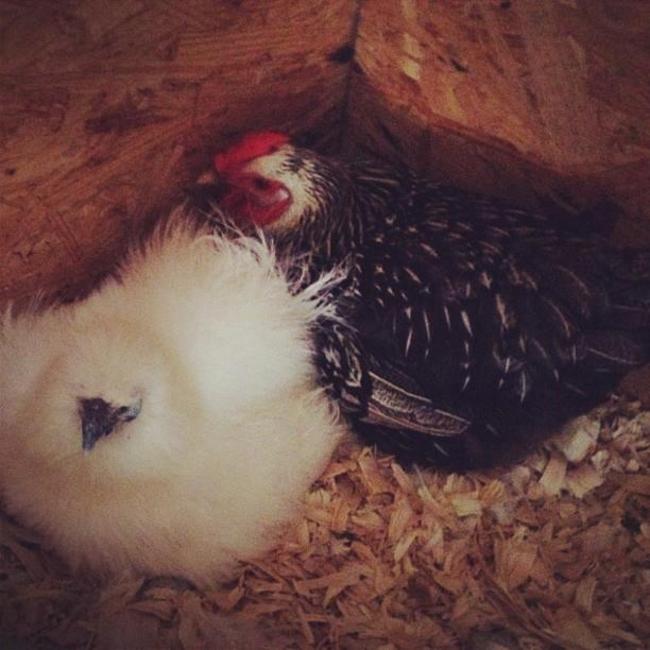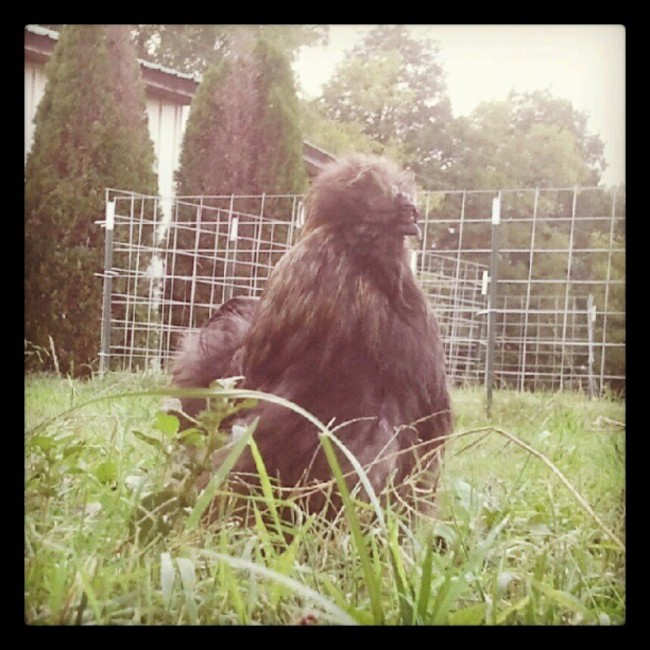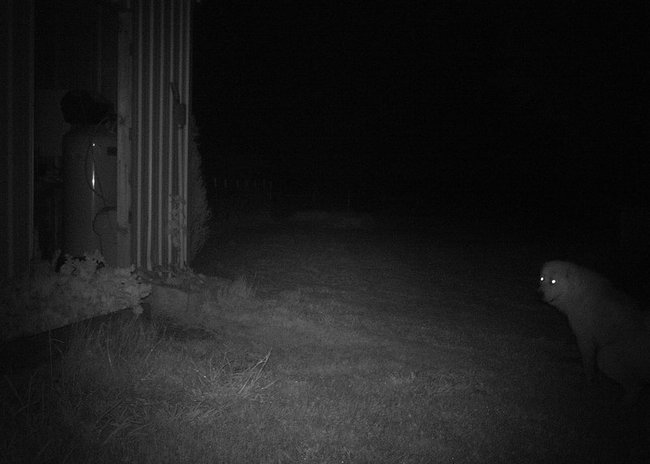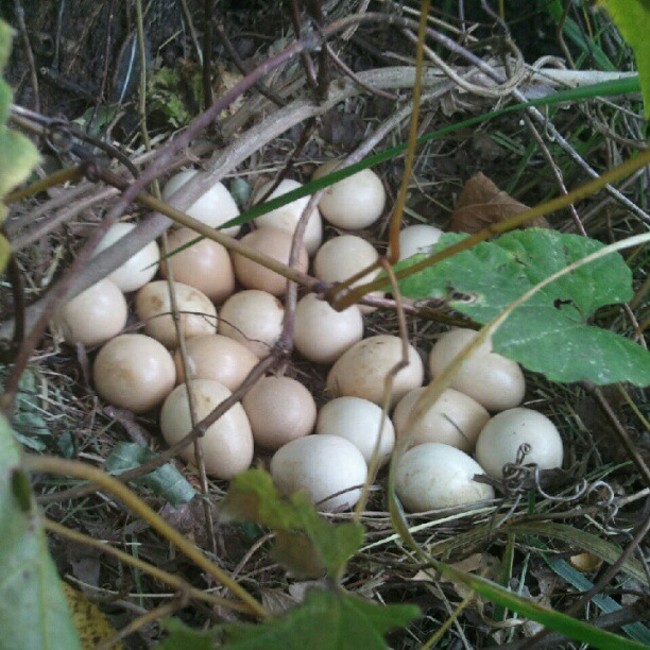 Lady Guinea's newest clutch, this time better hidden
Lady Guinea's newest clutch, this time better hidden
For the past three weeks two of our yard birds have been "gettin' broody". They're both extremely dedicated. The silkie, named Sassafras, or Sassy for short, will go for days without getting off the nest. The guinea, Lady Guinea, gets off everyday to eat and drink. Lady Guinea also stays highly alert and will fly at you if you come near. Sassy enters what I call "monk mode" and does not open her eyes. She just sits there completely still so she can preserve all of her energy. If you try to pick Sassy up she will puff up and make a harmless attempt to peck at you. Lady Guinea, on the other hand, will tear you up. Talons out, flying at your face. Both have lost a lot of weight on their mission to hatch some babies.
 Can't even see the nest unless you pull back the ivy
Can't even see the nest unless you pull back the ivy
Each hen has her own little nesting spot. Lady Guinea's previous attempt at getting broody only resulted in three chicks from a nest of 24 eggs. By the end of her 28 day broody period there were only 5 eggs left and she hatched out 3 of them. Her first nest was raided. She now has a different spot. It's on the opposite end of the yard, below a big oak tree. Her nest is neatly hidden beneath a bunch of poison ivy and isn't visible from the outside. Her previous nest was easy to spot. This one is much better. Perhaps she learned. It's only her second nest, after all. I think she picked the perfect spot. It's also sheltered nicely from the prevailing Southern winds. Right now it looks like she has about 24 eggs on there, one more than the last nest (we put a turkey egg underneath her last time). By my guess she should be due to hatch them on Monday or Tuesday, but I could be off a day or two either way.
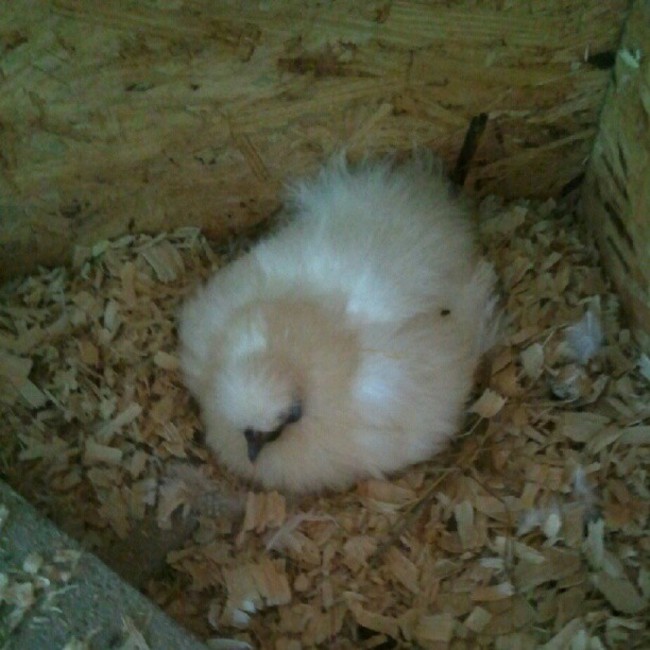 Sassy in monk mode, holding down the corner of the barnSassafras decided to get broody on her eggs in the "goat barn". This is the area where the goats can lounge while the other goats get milked. It's not really a 'barn' per se, it's an old tool shed that we converted to a barn. There's also a big paddock on the outside so they can be outside and graze while they wait. More frequently, however, they choose to stand near the fence and baaa at the nearby (but out of sight) buck pen. Now that the ladies are all coming into heat the evening milkings can be quite a hollering contest.
Sassy in monk mode, holding down the corner of the barnSassafras decided to get broody on her eggs in the "goat barn". This is the area where the goats can lounge while the other goats get milked. It's not really a 'barn' per se, it's an old tool shed that we converted to a barn. There's also a big paddock on the outside so they can be outside and graze while they wait. More frequently, however, they choose to stand near the fence and baaa at the nearby (but out of sight) buck pen. Now that the ladies are all coming into heat the evening milkings can be quite a hollering contest.
Anyway, Sassy's nest is in the corner in the area where the goats lounge. When the goats come in for milking they go check out Sassy as if they hadn't seen her in that corner every single day for the past 3 weeks. They poke their noses down at her and she awakens from monk mode and pecks at their faces until the goats go on about their business (aka take a nap).
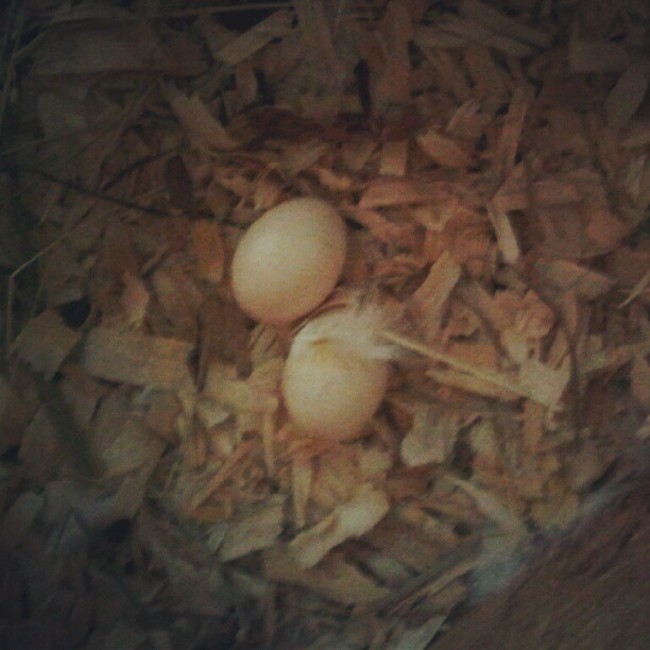 Sassy's eggs. Better make the most of 'em Sass
Sassy's eggs. Better make the most of 'em Sass
Sassy's nest, in comparison to Lady Guinea's, has only TWO eggs. We think they're fertile, but we can't be totally sure. She should be due at a similar time to Lady Guinea. Elvis, our silkie rooster (click to view his glorious crow), would be the proud father. He's my favorite (along with everyone else's, come on), so we're really excited for Sassy to hopefully hatch out a couple chicks.
If you're wondering about Lady Guinea's previous gaggle of baby guineas, none of them made it. Two went missing after a few days. One made it a few weeks and was looking great, but then one day it was just gone. It had even gotten to the point where it was roosting in the coop. No idea what happened. This time around, we'll be taking the little baby guinea chicks and raising them up. If it were still summertime I would give her another chance (and she'll have another chance next year), but with the cold, rainy weather I'd rather see to it that the babies are OK.


